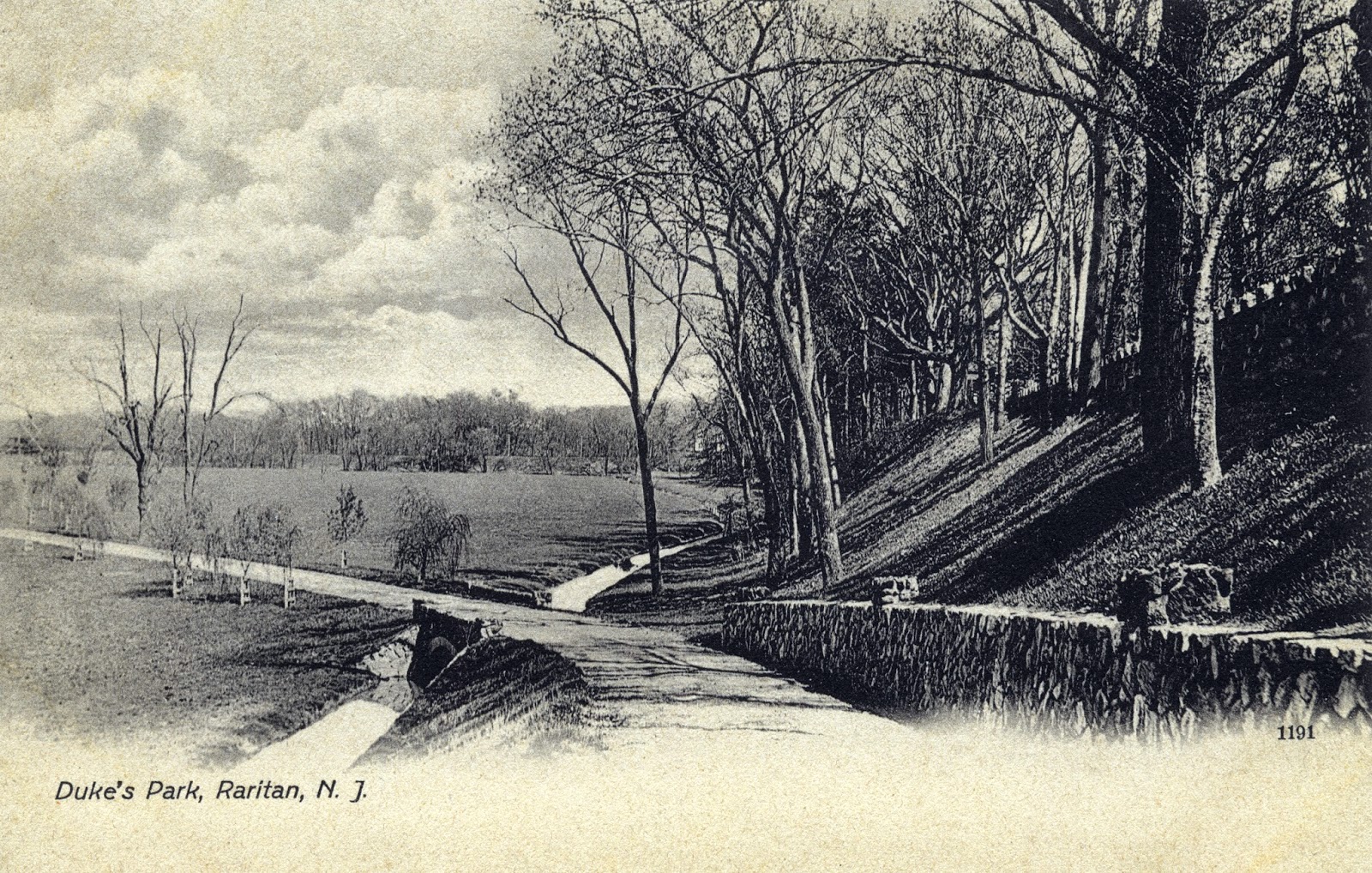Today, June 16, 2015, marks the 100th anniversary of what is likely the most lavish event ever hosted at Duke Farms in Hillsborough, New Jersey. The occasion was the wedding of J.B. Duke's favorite niece, Mary L. Duke, to Anthony Joseph Drexel Biddle, Jr. of Philadelphia. As most contemporary newspaper accounts noted, the marriage completed a unique union between two great families of New York and Philadelphia society, as the bride's brother was wedded to the groom's sister two months previously.
 |
Mary L. Duke and A.J. Drexel Biddle. Jr. and their attendants
in front of the residence at Duke Farms, June 16, 1915 |
To accommodate the 600 attendees, a special platform topped with a spectacular blue and white awning was built along the South Branch Railroad which transected the Duke Estate. Guests arriving from New York and Philadelphia on private rail cars were dispatched through Somerville and right to the platform in the heart of Duke Farms, where automobiles were waiting to take them to Duke's country manor at the northern end of the property.
 |
| Duke-Biddle wedding invitation, 1915 |
J.B. Duke spared no expense getting his estate ready for the grand occasion. It was said that he spent two weeks personally overseeing every aspect of the preparations.
 |
| Postcard view of the Duke residence circa 1913 |
The ceremony, performed by Bishop Darlington, began at 5 p.m. in the Palm Room. This is how it was described by The New York Times:
The ceremony was performed in the palm room, which had a vaulted ceiling and a mezzanine gallery. This room, in the centre of the house, with a wide entrance hall leading to the porte cochere, was transformed into a chapel of flowers. The multi-paned windows, soft lights, and the tones of an organ gave the place the atmosphere of a chapel in the woods, for the boughs of the trees waved in the breeze close to the open windows, and from afar was heard the splash of many fountains.
An aisle was formed with high gilt standards, topped with great masses of peonies of roses, and connected with white satin ribbons. The bridal party, entering from the front entrance, passed up the aisle to a chancel of flowers, while the guests stood grouped close together on either side. [I should think so, I have been in those rooms, and they don't hold 600!] In fact, the capacity of the palm room was over-taxed, and there were guests in the mezzanine gallery. Outside the high windows, looking down from the second-story roof, were assembled many of the servants and employees on the estate.
Wow!
 |
The Palm Room at the Duke residence in Hillsborough, New Jersey,
from a newspaper story circa 1911 |
Newspaper stories were sure to describe the gowns, jewels, and flowers worn and carried by the wedding party and their guests. Suffice it to say that they are exactly what you would expect from a wedding where the gifts to the bride amounted to about $7 million in 2015 dollars, and Mr. Drexel Biddle, Sr. presented Mr. Drexel Biddle, Jr. a check for $200,000 (about $4.5 million today).
 |
| The bridal party at dinner, 27 June 1915 New York Times |
After the ceremony, guests adjourned to the lawn to congratulate the newlyweds and partake in refreshments. Special trains for New York and Philadelphia departed at 7:30, but many of the younger guests remained, dancing and partying as the orchestra played into the evening.
 |
Doris Duke, not yet three years old, performed her flower girl duties
in a white lace frock with a pink sash. |
Pure conjecture on my part, but the Biddle-Duke wedding of 1915 may have been something of a test run for the event that was sure to have eclipsed it in every way - the eventual wedding of J.B. Duke's daughter Doris. The heiress who served as flower-girl for her older cousin was not yet three in 1915 and tragically was just twelve when her father died in 1925.
 |
| 27 June 1915 New York Times |




























